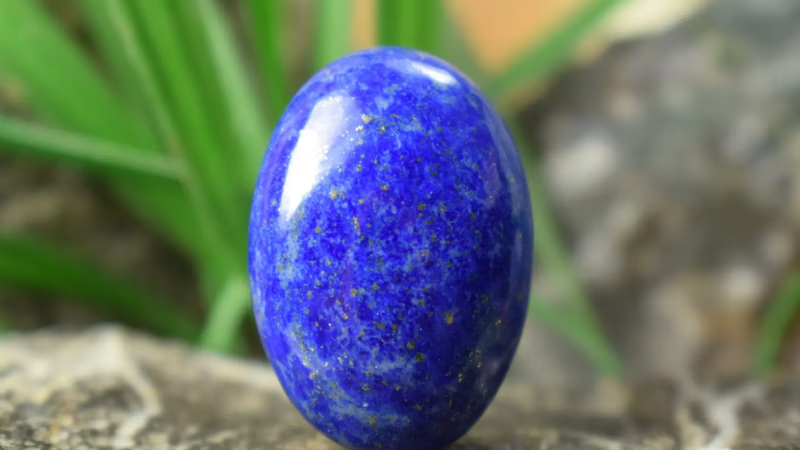
Lapis lazuli mining in West Asia showcases rich trade history.
Lapis lazuli has a long history of being mined in West Asia, particularly in countries located in the Middle East, such as Afghanistan and Iran. Lapis lazuli has been mined for thousands of years, primarily in a few specific regions around the world. These are the primary sources of Lapis lazuli, but smaller deposits have also been found in other countries, including Pakistan, Myanmar (Burma), Angola, Canada, and Italy. Lapis lazuli is a highly sought-after gemstone, and the demand often exceeds the supply from these mines, leading to the use of synthetic alternatives or lower-quality materials in the market.
The geological conditions in West Asia are favorable for the formation of Lapis lazuli deposits. Lapis lazuli is formed in metamorphic rocks, and the specific combination of minerals and geological processes required for its formation is found in certain areas of West Asia. West Asia has a rich history of mining and trade, dating back thousands of years. The mining of Lapis lazuli in this region can be traced back to ancient civilizations such as the Sumerians, Egyptians, and Persians. The knowledge and expertise in mining and extracting Lapis lazuli have been passed down through generations, contributing to the development of high-quality mines.
The combination of geological factors, mining traditions, availability of raw materials, craftsmanship, and cultural significance has made West Asia a prominent source of high-quality Lapis lazuli. These factors have established the region's reputation for producing some of the finest Lapis lazuli gemstones in the world. There are very few azure mines in the world, and today in Badakhshan, Afghanistan, the Kokcheh Valley in the Kranomunjan region, as well as the western Hindu Kush mountains near the source of the Amu Darya River, are among the best azure species in the world still extracted by traditional methods. Afghan lapis lazuli has been considered since 6500 years ago during the Achaemenid period, which was part of Iran.
- The Sar-e-Sang mine in the Badakhshan province of northeastern Afghanistan is one of the oldest and most famous sources of Lapis lazuli. Afghan Lapis lazuli is highly valued for its intense blue color and has been mined in this region for over 6,000 years.
- The Andean region of Chile, specifically the Ovalle and Coquimbo provinces, is another significant source of Lapis lazuli. The Chilean Lapis lazuli is known for its deep blue color and is often referred to as "Andean Lapis."
- The Lake Baikal region in Siberia, Russia, is also known for its Lapis lazuli deposits. Russian Lapis lazuli tends to have a lighter blue color and is often found in combination with other minerals such as pyrite and calcite.
- In the United States, Lapis lazuli is primarily mined in Colorado. The Stone Canyon mine near Delta, Colorado, is known for producing Lapis lazuli with a rich blue color and a high concentration of pyrite.
Pakistan in the Chagay Mountains at Bibi Dick, 35 km north of Dalbandian near the Afghan border, Lake Baikal in western Russia where Lapis Lazuli contains Dolomite marble, the Pamirs, South America, the Sinai Peninsula, and parts of Iran. West Asia has abundant sources of the minerals necessary for Lapis lazuli formation. Lazurite, the primary constituent of Lapis lazuli, is found in significant quantities in the region, along with other minerals like pyrite and calcite, which often occur alongside Lapis lazuli.
West Asia has a strong tradition of lapidary and gemstone craftsmanship. The skilled artisans in this region have honed their skills in cutting, shaping, and polishing Lapis lazuli, resulting in the production of high-quality finished gemstones. Lapis lazuli holds cultural and historical significance in West Asian civilizations. It has been used in jewelry, religious artifacts, and decorative objects for centuries. The demand for high-quality Lapis lazuli from local markets and international buyers has contributed to the development and maintenance of mines in the region.
-
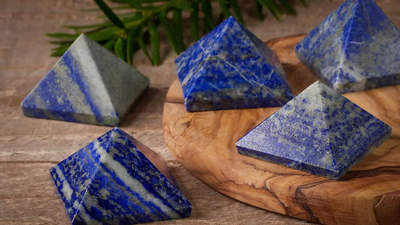
Lapis lazuli is a significant stone in chakra therapy, particularly for the throat chakra, which governs communication and self-expression. It enhances verbal and written communication skills, promotes clarity, and helps overcome shyness and public speaking fears. When used in meditation or energy healing, placing Lapis lazuli near the throat chakra is believed to clear blockages and balance energy. The stone also harmonizes masculine and feminine energies, supporting overall well-being and spiritual growth. Additionally, Lapis lazuli aids in accessing inner wisdom and enhances intuitive awareness. Historically valued by ancient Egyptians, it symbolizes truthfulness and integrity, encouraging authenticity in one"s actions. The stone promotes emotional healing by calming the mind and alleviating anxiety while facilitating deep relaxation. It is also linked to the third eye chakra, enhancing intuition and spiritual vision.
Furthermore, Lapis lazuli assists individuals in understanding their true selves, releasing repressed emotions, and providing spiritual protection against negative energies. Overall, it serves as a powerful tool for self-discovery and connection to higher realms. "
-
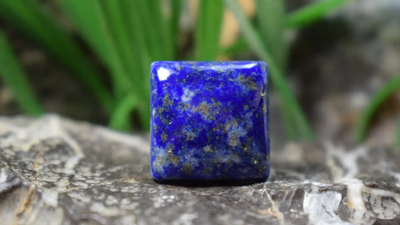
Identifying genuine Lapis lazuli from synthetic alternatives requires careful examination of various characteristics. Natural Lapis lazuli is typically deep blue with unique variations, including golden or white calcite streaks and specks of pyrite. In contrast, synthetic stones often exhibit a uniform, overly vibrant color that lacks the natural imperfections found in authentic specimens. Price can also be a telltale sign; if a Lapis lazuli stone is significantly cheaper than market value or available in large quantities, it may be synthetic. Techniques for verification include using a Chelsea Filter, which reveals different light reflections between natural and synthetic stones. Additionally, physical tests such as checking for an unpleasant odor when heated or observing color differences in cracks can help distinguish authenticity. Natural stones usually contain inclusions and irregular patterns, while synthetics tend to have a consistent appearance. For definitive identification, consulting with a qualified gemologist or reputable laboratory is recommended to ensure the authenticity of the stone.
-

Lapis lazuli"s value is primarily determined by its color, with the most sought-after stones showcasing a deep, vivid blue hue. Inclusions of minerals like pyrite and calcite can enhance the stone"s beauty, but excessive inclusions may detract from its clarity. The size and shape of Lapis lazuli vary based on their intended use, with larger stones favored for statement pieces and smaller ones for intricate designs. A high-quality polish is essential for maximizing visual appeal, as it enhances the stone"s color and shine. The origin of the stone also plays a significant role in its quality; Afghan Lapis lazuli is historically esteemed for its rich blue color and high pyrite content, while stones from Chile and Russia offer unique characteristics. Authenticity is crucial when purchasing Lapis lazuli, as synthetic alternatives exist. Buyers should seek reputable sources to ensure they acquire genuine stones without treatments that alter their natural appearance. While not rare, high-quality Lapis lazuli with exceptional features can be scarce, making them valuable to collectors.
Ultimately, the best type of Lapis lazuli depends on personal preferences regarding color intensity and inclusion patterns. "
-
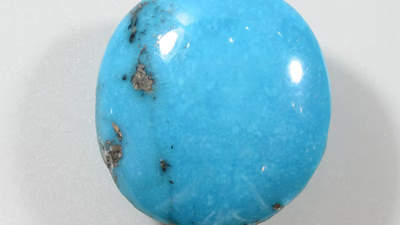
Synthetic Lapis lazuli, or synthetic Azure, is a man-made alternative to natural Lapis lazuli gemstones. Created in laboratories, it mimics the appearance of natural stones using various minerals and binding agents. Commonly, powdered minerals like lazurite and pyrite are combined with resins to produce synthetic stones. While these synthetic versions are more affordable and widely available, they lack the authenticity and inherent value of natural Lapis lazuli. Buyers should be cautious and knowledgeable about distinguishing between the two types when purchasing. Natural Lapis lazuli is a metamorphic rock valued for its unique color and historical significance, often used in jewelry and art. In contrast, synthetic stones may fade over time depending on the quality of materials used in their production. Various other stones can be confused with natural azure due to similar appearances, including sodalite and azurite.
The market also features different names for synthetic products that can mislead consumers. Understanding these differences is crucial for making informed purchasing decisions.
-
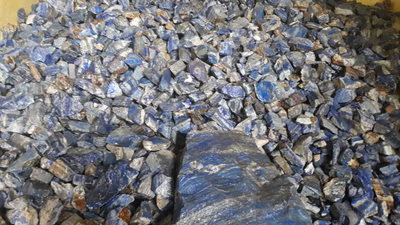
Lapis lazuli, or azure, is a semi-precious gemstone renowned for its vibrant blue hue and historical significance. Composed mainly of lazurite, calcite, and pyrite, its color can range from light to dark shades, often featuring golden flecks or white streaks. Historically sourced from Afghanistan"s Sar-e-Sang mines, it is also found in Russia, Chile, Canada, and the U. S. Lapis lazuli has a moderate hardness of 5 to 6 on the Mohs scale, making it suitable for jewelry and decorative items. Its cultural importance spans thousands of years; ancient civilizations like the Egyptians and Greeks valued it for its protective properties and associations with wisdom and enlightenment. The stone is used in various forms including beads, pendants, sculptures, and as a pigment for ultramarine in art. Lapis lazuli"s unique characteristics include its opaque nature and glassy to waxy luster.
It has been utilized not only for aesthetic purposes but also in dyeing fabrics and pottery. The gemstone"s rich history reflects its enduring appeal across cultures. "
-

Lapis lazuli, a highly valued gemstone, has been mined for thousands of years in West Asia, particularly in Afghanistan and Iran. The geological conditions in this region are ideal for the formation of Lapis lazuli deposits, which are primarily found in metamorphic rocks. The Sar-e-Sang mine in Afghanistan is one of the oldest and most renowned sources, with a history dating back over 6,000 years. Other notable sources include the Andean region of Chile and Lake Baikal in Russia. The craftsmanship and mining traditions passed down through generations have established West Asia as a leading producer of high-quality Lapis lazuli. Despite the abundance of resources, demand often exceeds supply, leading to the use of synthetic alternatives. The cultural significance of Lapis lazuli is profound; it has been utilized in jewelry and religious artifacts throughout history. As global interest continues to rise, maintaining these mines is crucial for sustaining both local economies and international trade.
-

Lapis lazuli has been revered since ancient times for its medicinal and magical properties. In ancient Egypt, it was ground into powder for use in ointments and cosmetics, believed to cure eye ailments and protect against evil spirits. Greek physician Dioscorides noted its cooling effects and therapeutic benefits for fevers, inflammation, and skin diseases. Historical texts from scholars like Ibn Sina highlight its medicinal uses, including treatment for digestive issues and as an antidote for poison. Lapis lazuli was also recognized in Traditional Chinese Medicine (TCM) for its benefits to the liver, spleen, and respiratory system, promoting mental clarity and spiritual well-being. Its applications extended to Islamic medicine where it was used to treat fevers and enhance cognitive functions. Despite the lack of archaeological evidence regarding its trade specifically for medical purposes, ancient writings provide substantial insights into the healing properties attributed to this azure stone.
-
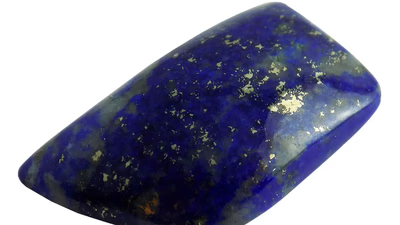
Lapis lazuli, a blue stone with historical significance, has been referenced in ancient texts, including the Epic of Gilgamesh and Islamic literature. In ancient Mesopotamia and Egypt, it symbolized power and divinity, often used in jewelry and art. Although not explicitly mentioned in the Qur"an, it is associated with Paradise in Islamic tradition. The stone"s vibrant azure color has adorned Islamic art and architecture, representing spiritual realms. Historical accounts by travelers like Ibn Battuta highlight its use in decorative arts across various regions. Lapis lazuli was traded along significant routes such as the Silk Road, connecting civilizations from Afghanistan to the Mediterranean. Its metaphysical properties are recognized in Islamic traditions, believed to promote mental clarity and protection against negativity. The trade of Lapis lazuli not only reflects its economic value but also its cultural importance across different societies.








